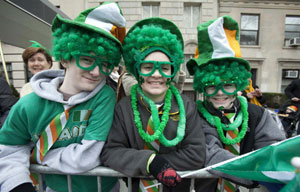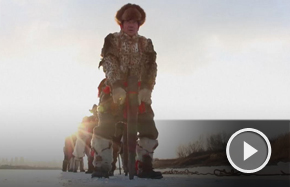The stuffing of legends
Even the gristle in the giraffe's ears is removed. Tin plates are stuffed so that the ears look real.
"We use quails to practice taxidermy. When I first stripped the little creatures, my hands couldn't help shaking. But now it is easier, after all, we are breathing life into the dead animals," says Shan, who wears a pair of glasses and looks studious. He used to be a narrator at Shanghai Science and Technology Museum.
After taxidermy, the skeleton is constructed to a designated pose with steel, wood and nails. The gestures of animal specimens on display are predefined. Based on the original sizes of each part, clay is pasted on the frame to shape the animals' muscles.
Based on the clay model, plaster is used to make animal mannequins, and finally the preserved fur is sewed onto it. It takes about three months to finish a medium-sized mammal.
In the past, straw and bamboo-made threads were stuffed into the models, which reduced the vividness of specimens.
There are various pictures of different animals on display in the workshop. For each animal, there are a few photos, showing different gestures.
One of the specimen makers, Ma Mingyi, who used to be a sculptor, is especially adept in perfecting the details to make the specimens look lifelike.
"The last phase (of making the specimen) is the most painful, which often involves perfecting the gestures of the specimens, mending the broken parts and adding colors," Ma says, as he meticulously varnishes the nose of the giraffe to make it look wet.
"Have you noticed the noses of pets?" he says. "Wet noses indicate they are healthy."
Ma shares that he once used tweezers to comb the hair of an emperor penguin specimen. "I stared at the penguin and tidied the hair one by one. When I finished the job three days later, everything in my eyes had only two colors: black and white," he recalls.
Artificial eyeballs imported from Germany bring the specimens to life, compared to glass balls, which were widely used before.
"The artificial eyeballs have pupils and are clear and real," Ma says, showing a package of various artificial eyeballs.
Ge Dong, who studied chemistry and joined the team five years ago, says as far as possible they use only environmental friendly materials in the specimen making process.
"The hair of the specimen, in essence, is protein, and attracts worms," Ge says.
He explains that they used to apply arsenic powder on the inside of the fur to keep the worms away, but the chemical is toxic to specimen makers and visitors. "If our hands are cut, the wound is difficult to heal," he says.
But they have recently found arsenic-free chemicals, which also preserve the furs better, Ge says.
The specimen-making center, affiliated to Shanghai Science and Technology Museum, started production in 2007 and has made more than 500 specimens to date.
All the specimens they made will be exhibited in the 45,000 square-meter Shanghai Natural History Museum, which is under construction in Jing'an Sculpture Park.
Part of the 260,000 exhibits in the old museum, which is a 1920s building located in east Yan'an Road of Huangpu district, will be transferred to the new museum, Shan says.
The new museum has also collected more than 10,000 specimens from home and abroad.
Shan is anxious to see his works in the new museum. The father of a 9-month-old baby envisions taking his grandson to the museum one day. "Then I will proudly tell him 'this specimen is made by your grandpa'."
Contact the writer at wuni@chinadaily.com.cn.






















